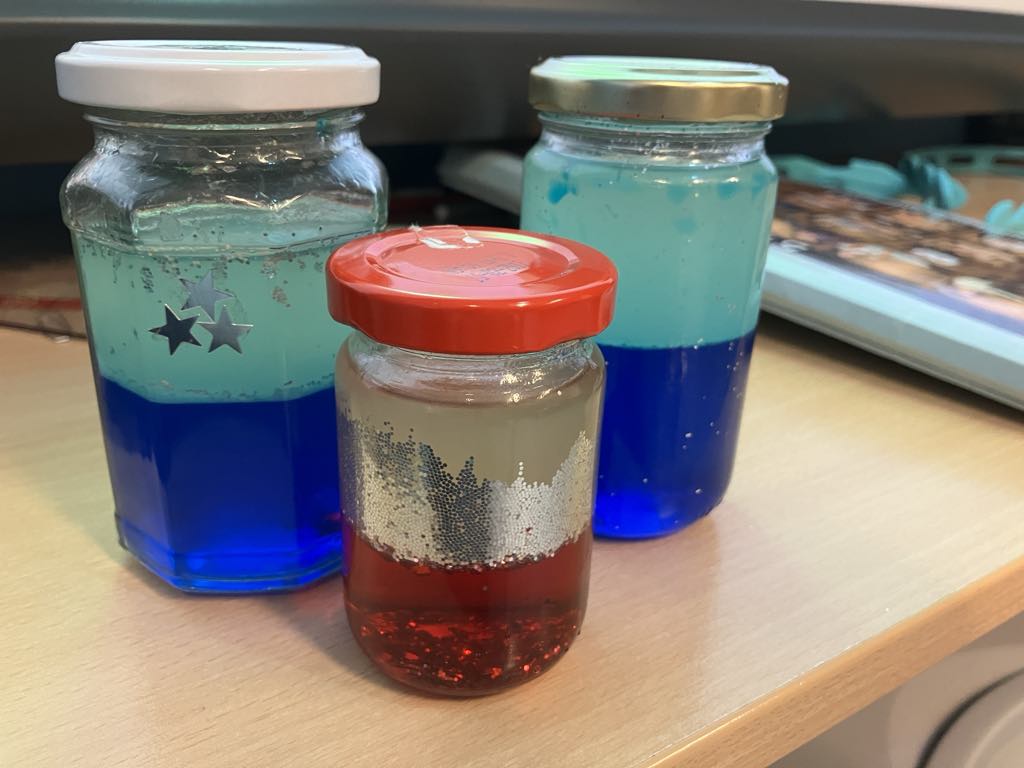Mixtures
Let's learn about learn about mixtures, mass and volume!
Welcome to this workshop post! I’d like to share a mixture workshop I designed for a local primary school teacher.

This workshop was created for students aged 10-12 years old (5th and 6th grade in the Belgian primary school system). The aim of this workshop is to learn about mixtures, mass and volume.
In this workshop, students will:
- make different mixtures
- differentiate heterogeneous and homogeneous mixtures
- identify air as a homogeneous mixture of gases
- calculate volumes, and weigh masses
- write scientific protocols
- determine that 1 L of water is 1 kg of water and 1 dm3
At the bottom of this page, you will find downloadable worksheets and teacher’s notes for this workshop. However, they don’t include instructions to make the sensory bottles in the image above as these are an optional fun little extra. I think it’s always great for students to make something they can hold on to and remember the workshop.
Here’s how to make them! For each student, you will need:
- a maximum 300 mL nice container (jam jar, nice bottle, …) - You can ask students to bring their own
- water
- oil
- food coloring
- glitter (optional)
- Fill half the container with water
- Fill the other half with oil
- Add some glitter
- Add a few drops of food coloring
- Close the container and shake it
This is a great introduction to the concept of mixtures. Before stirring, the different components are all separated. After shaking, everything mixes together. Then after resting, the water stays colored, but separates from the oil. This shows that oil and water don’t mix (heterogeneous mixture), while the food coloring and water do mix (homogeneous mixture).
For a more edible alternative, why not make a vinaigrette! Here’s what you’ll need for this variation:
- a maximum 300 mL nice container (jam jar, nice bottle, …) - You can ask students to bring their own
- oil
- vinegar
- salt & pepper & herbs
- mustard (optional)
- honey (optional)
- Fill 2/3 of the container with oil
- Fill the other 1/3 with vinegar
- Add some salt, pepper, herbs, and optional ingredients if using
- Close the container and shake it
In this case, at first, the oil and vinegar are all separated. After shaking, everything mixes together. After resting, all ingredients separate once again. Therefore, in the vinaigrette jar, there are liquid-liquid and liquid-solid heterogeneous mixtures.
This workshop is quite long (6h 35 min) as it was designed to cover the entire mixture program developed by the “Fédération Wallonie-Bruxelles” for this age group. You can easily split it into smaller parts to fit your schedule.
Click the button below to download worksheets for this activity: